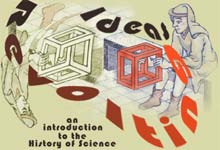
University of California, Irvine
Instructor: Dr. Barbara J. Becker

|
|
Decline of Interest in Secular
Knowledge |
||
|
||
Transmission of Ancient Knowledge in Western Europe |
|
|
| Goals:
standardizing and preserving Christian dogma
preserving and practicing Christian lifestyle
|
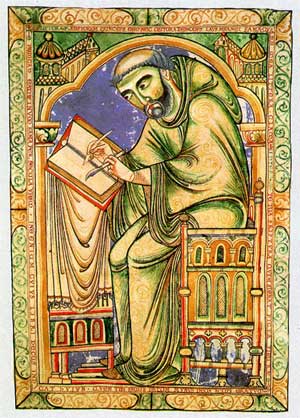
Monk at work in the Scriptorium |
|
|
|
|
|
|
|
| Plato |
|
|
|
| Aristotle |
|
|
|
| Lucretius |
|
written in Latin |
|
Notable Early Preservers and Translators of Ancient Texts |
Boethius (480-524)
|
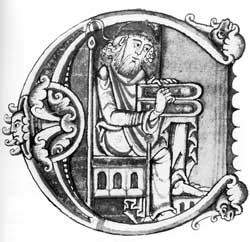
|
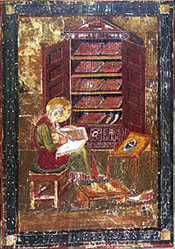 |
Cassiodorus (488-575)
|
Isidore of Seville (560-636)
|
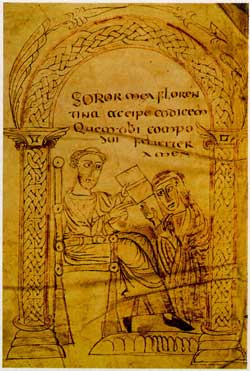
|
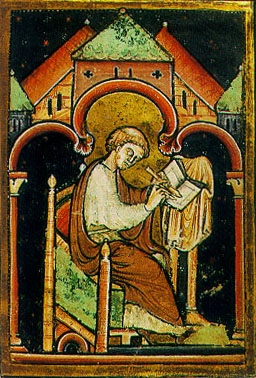
|
Bede of Jarrow (673-735)
|
|
|
|
Transmission of Ancient Knowledge to Persia |
Jundishapur |
|
|
The Nestorians From time to time, leaders in the early Christian Church gathered in what they called "ecumenical councils": meetings at which bishops from all of Christendom could consider, discuss and (it was hoped) come to universal agreement on disputed or unclear points of scripture and church doctrine. The first of these councils was held in the city of Nicaea (ny-SEE-ah) near Constantinople in 325 CE. Soon afterward, academies modeled after that in Alexandria were founded in Antioch and Nisibis. Greek served as the lingua franca for scholars at all the Alexandrian-style schools, but Syriac was the native language of students at Nisibis and many texts were translated there from Greek into Syriac. When the school moved to Edessa in 363, the Syriac tradition moved with it.
At the third council, held in Ephesus in 431 CE, delegates condemned the bishop of Constantinople, Nestorius (381-451), as a heretic for questioning Mary's status as Mother of God. Nestorius and his followers were exiled and settled in Edessa. Religous conflicts in Edessa prompted the Nestorians to move further east in 457. Around 560, the Persian leader, Khosru I, established an Alexandrian academy in Jundishapur where instruction would be conducted in Syriac.
The Bactrians For centuries after the dissolution of Alexander's empire, Greek culture continued to influence the people of Bactria. Cities like Bactra and Merv were crossroads on the Silk Road (c. 100 BCE) that helped introduce new commodities and technologies from the East, such as paper and paper-making in the 750s.
India Alexander's empire had extended to the Indus River valley. Despite the enormous distances separating Alexandria and India, communication and trade continued over the centuries via land and sea (Alexandria-Medina-Aden-Cambay; Alexandria-Antioch-Basra-Cambay).
Astronomical records from Alexandria found their way to observatories like those in Pataliputra and Ujjain. Indian astronomers added their own observations to the old but replaced the old-fashioned sexagesimal system of notation (base 60) which dated back to Babylonian times with a decimal system that included a symbol for "nothing" to help keep track of place values. They called this symbol sunya, the Hindi word meaning "the void." When this was translated into Arabic, scholars used the word sifr, meaning "empty." Italians transliterated this word as zefirum, zefiro, and zefro, which eventually became zero. |
Islam and Ancient Knowledge (9th-12th c) |
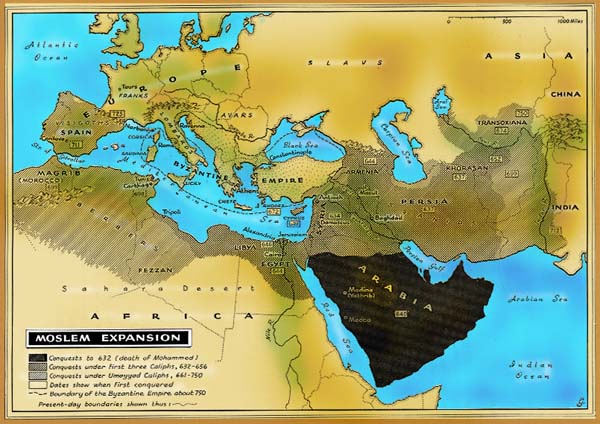
__________
|
Translating Ancient Texts from Greek/Syriac into Arabic |
|
Hunain ibn Ishaq (c.808-873) Galen's book on the sects ... was translated into Syriac before me by a certain Ibn Sahda from al-Karkh, who was a weak translator. When I was a young man of twenty or a little older, I translated it for a physician from Jundishapur named Shirishu ' b. Qutrub, from a very faulty Greek manuscript. Later, when I was about forty, my pupil Hubaish asked me to correct the translation. Meanwhile a number of Greek manuscripts had accumulated in my possession. I collated these manuscripts and thereby produced a single correct copy. Next, I collated the Syriac text with it and corrected it. I am in the habit of doing this with everything I translate. A few years later I translated the Syriac text into Arabic for Abu Ja ' far Muhammad b. Musa.
Galen's Book on the Method of Healing:.... The first six books of this work were translated into Syriac by Sergius [of Resaina, d. 536] when he was still a very weak translator. After he had acquired experience as a translator, he translated the remaining eight books and produced a better translation than that of the earlier books. Salmawaih [ibn Bunan, d. 840] urged me to correct the second part of Sergius's translation for him in the hope that this would be easier and better than the production of a new translation. So he sat down opposite me with part of the seventh book, he with the Syriac text and I with the Greek text, and we collated it. He read the Syriac text aloud and whenever I noticed something that conflicted with the Greek text, I drew his attention to it and he would then begin to correct it. Yet in the end, this became too much for him, and he realized that an entirely fresh translation would be simpler and would turn out better stylistically as well as produce a much tidier result. So he asked me to translate these books, and I translated them all. This happened when we were in ar-Raqqah at the time of al-Ma ' mun's campaigns. He handed the translation to Zakariya' ibn 'Abdallah, known as at-Taifuri, when he was about to return to Baghdad, in order to have it copied there. However, fire broke out on board the ship on which Zakariya was travelling. The book was burned. No copy of the translation survives....
Shaikh Abu al-Khayr al-Hasan ibn Suwar (d. ca. 1030) I have copied this translation [of Aristotle] from a manuscript written by Shaikh Abu al-Khayr al-Hasan ibn Suwar. It ends with the following remarks:
Since the translators mentioned above, who rendered this book into Arabic on the basis of the Syriac translation of Athanasius, had no commentary at their disposal, they relied on their own insight in order to understand the ideas of the work. Everyone endeavoured to arrive at the truth and to understand the purpose intended by Aristotle. In the light of their understanding of the Syriac translation of Athanasius they translated it into Arabic, each in his own way. As we desire to become acquainted with the views of each one of them, we have here reproduced all the translations we were able to obtain, so that all of them may be studied and jointly used for the comprehension of Aristotle's meaning.... |
Notable Islamic Contributors to New Knowledge |
Al-Khwarizmi |
Baghdad |
mathematician
|
|
(Ibn al Haitham) |
Basra |
physicist
|
|
(Ali ibn Sina) |
Bokhara |
physician
|
|
(al Buruni) |
973-1048 |
philosopher, astronomer, geographer
|
Averroes |
Cordova |
philosopher
|
West Meets East (~11th-13th c) |
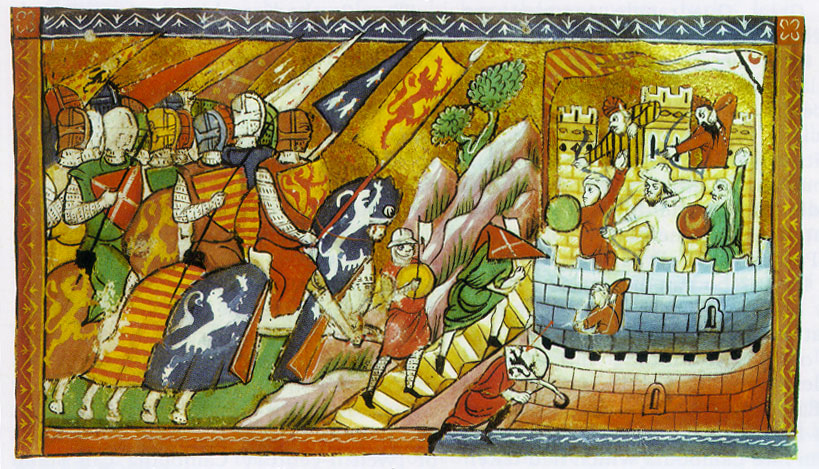
The Siege at Antioch (1098)
|
|
|
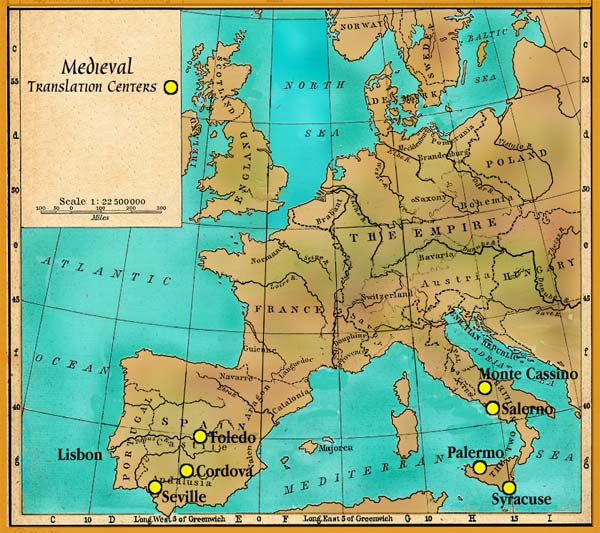
|
|
Star names:
|
|
|
|
|
|
|
|
| Vitruvius | On Architecture | written in Latin |
|
| Al-Khwarizmi | Arithmetic
Trigonometry Algebra |
Adelard of Bath/Arabic
Adelard of Bath/Arabic Robert of Chester/Arabic |
|
| Al-Kindi | Perspective | Gerard of Cremona/Arabic |
|
| Alhazen | Optics | translator unknown/Arabic |
|
| Avicenna | The Canon on Medicine | various translators/Arabic |
|
| Averroës | commentaries on Aristotle | Michael Scot/Arabic |
|
| Leonardo Fibonacci | Book of the Abacus | written in Latin |
|
| Hippocrates | various treatises | various translators/ Greek & Arabic |
|
| Aristotle | various treatises | various translators/ Greek & Arabic |
|
| Euclid | Elements
Optics |
Adelard of Bath/Arabic
unknown translator/ Greek and Arabic |
unknown |
| Archimedes | complete works | William of Moerbeke/Greek |
|
| Hero of Alexandria | On Air
On Reflection |
unknown translator/Greek
William of Moerbeke/Greek |
13th c |
| Galen | various treatises | various translators/ Greek & Arabic |
|
| Claudius Ptolemy | Almagest
Optics |
Gerard of Cremona/Arabic
Eugenius of Palermo/Arabic |
|
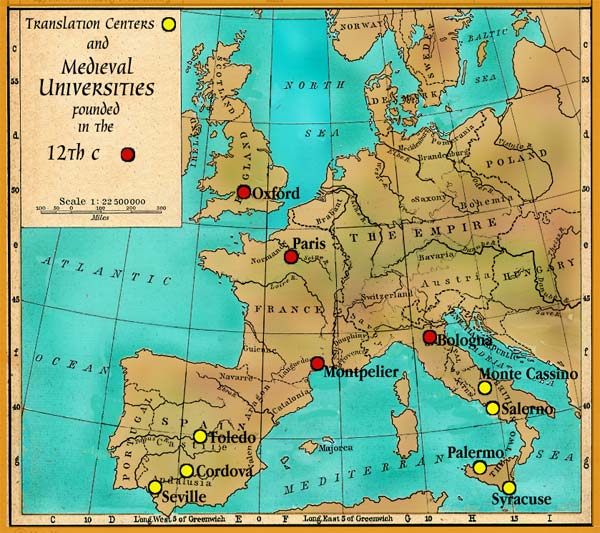
|
|
||
|
||
Grammar Nicostrata, the legendary inventor of the Roman alphabet, unlocks the door to the Tower of Learning for an eager student. She hands him a board inscribed with the precious letters he will need to enter. Successful mastery of grammar on the first two floors will prepare him to advance to the third floor occupied by Aristotle (logic), Tully (rhetoric and poetry) and Boethius (arithmetic). On the fourth floor, he will learn music from Pythagoras, geometry from Euclid, and astronomy from Ptolemy. On the fifth floor, Plato teaches philosophy and Seneca gives lessons on morality. Finally, at the Tower's top, the 12th century theologian, Peter Lombard holds forth on theology and metaphysics.
Logic Armed with her Sword of Syllogism, Bow of Questions, and Sonorous Voice which broadcasts her well-formed premises to all who may be in hearing range, Logic leaves the conundrums of Parmenides behind and carefully sidesteps the many obstacles that fallacy has placed in her path. She follows her trusty dogs, Truth and Falsehood, as they give chase to the Problem at hand, and thus avoids getting lost in the tangled Woods of Opinion.
Questions for university scholars: Ancients may have been pagans, but they knew and understood a lot more than we do about the world and how it works. |
|
|
Lectures and Repetitions
ensure the preservation of existing knowledge.
|
A Lecture
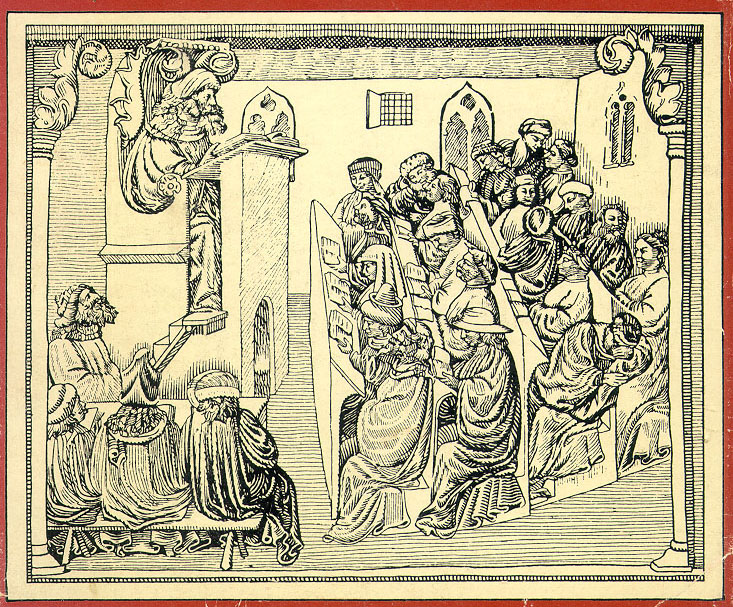
__________
Quaestiones
How is it that while the eye is shut, the visible breath is not left outside? NEPHEW: Just imagine that while the visible breath is touching a star, the eye is shut. This is bound to happen, frequently, and the breath will then be left outside. ADELARD: If only you would remember what I said previously, you would not raise this objection. The breath is very swift, and, as said above, it is established that it is sent by the mind, and through the mind. It is clear that the eye can be closed only by the mind, by which all voluntary motion is communicated to the body; let the consequence then of this also be clear, that that which sends also receives; and when it wills, shuts the door in such a way as to involve no injury to itself; and so that nothing of its own may remain outside, especially too when the thing itself is of such speed that it immediately receives it back again.... |
|
All created things exist for us as a book, a picture and a mirror. Aristotle has taught us that each and every body has a natural inclination to return to its rightful place. How does a stone know which way to fall? What does it wish to show us by its chosen path? |
|
|

What is the principal responsibility of the scholar? |
|
|
....or to modify it? |
|